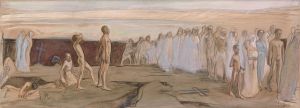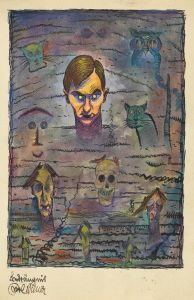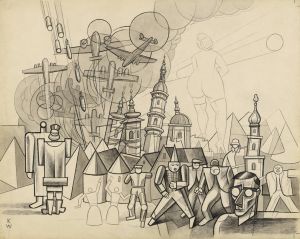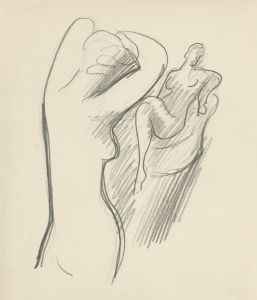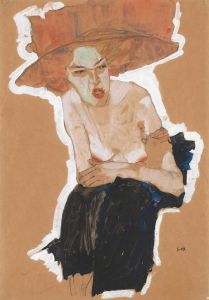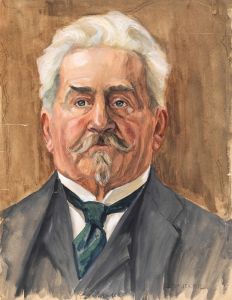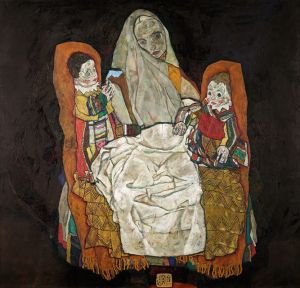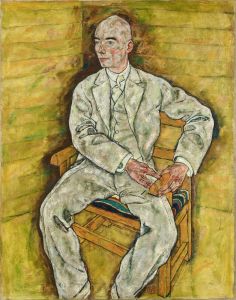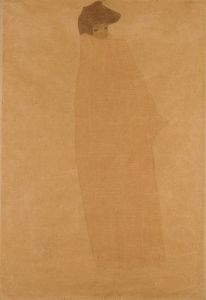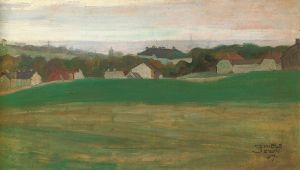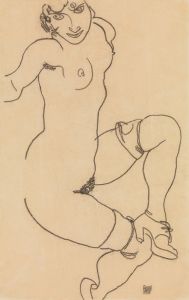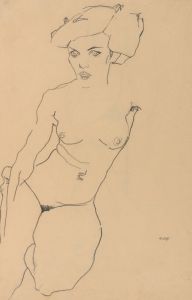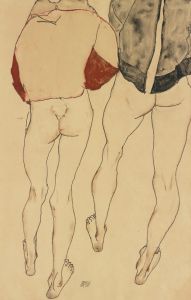
Selbstbildnis
A hand-painted replica of Egon Schiele’s masterpiece Selbstbildnis, meticulously crafted by professional artists to capture the true essence of the original. Each piece is created with museum-quality canvas and rare mineral pigments, carefully painted by experienced artists with delicate brushstrokes and rich, layered colors to perfectly recreate the texture of the original artwork. Unlike machine-printed reproductions, this hand-painted version brings the painting to life, infused with the artist’s emotions and skill in every stroke. Whether for personal collection or home decoration, it instantly elevates the artistic atmosphere of any space.
Egon Schiele, an Austrian painter known for his intense and raw expressionist style, created several self-portraits throughout his career, one of which is titled "Selbstbildnis" (Self-Portrait). Schiele was a protégé of Gustav Klimt and became a major figurative painter of the early 20th century. His work is noted for its intensity, its raw sexuality, and its often grotesque depictions of the human form.
"Selbstbildnis" is one of Schiele's many self-portraits that reflect his deep introspection and exploration of identity. Schiele's self-portraits are significant because they offer a glimpse into his psyche and his perception of himself. Unlike the more idealized self-portraits of earlier artists, Schiele's works are characterized by their stark honesty and sometimes unsettling realism. He often depicted himself in contorted poses, with exaggerated features and a gaunt, almost skeletal appearance. This approach was part of his broader artistic exploration of the human condition, mortality, and the complexities of the self.
Schiele's self-portraits, including "Selbstbildnis," are marked by their distinctive use of line and color. He employed sharp, angular lines to define his figures, creating a sense of tension and dynamism. His use of color was equally bold, often featuring a limited palette that emphasized the starkness of his compositions. The backgrounds in his self-portraits are typically minimal, drawing the viewer's attention to the figure itself and enhancing the emotional impact of the work.
The psychological depth of Schiele's self-portraits is further enhanced by his expressive use of gesture and pose. In "Selbstbildnis," as in many of his other works, Schiele's body language conveys a sense of vulnerability and introspection. His poses are often twisted or contorted, suggesting a struggle with inner demons or a search for self-understanding. This focus on the psychological and emotional aspects of the self was a hallmark of Schiele's work and contributed to his reputation as a leading figure in the Expressionist movement.
Schiele's self-portraits also reflect the broader cultural and artistic currents of his time. The early 20th century was a period of significant social and political upheaval, and many artists sought to capture the anxieties and uncertainties of the era in their work. Schiele's intense, often unsettling self-portraits can be seen as a response to these broader existential concerns, as well as a personal exploration of his own identity and place in the world.
Egon Schiele's "Selbstbildnis" remains an important work in the history of modern art, exemplifying the artist's innovative approach to portraiture and his profound engagement with the human condition. Through his self-portraits, Schiele not only explored his own identity but also pushed the boundaries of traditional portraiture, paving the way for future generations of artists to explore new ways of representing the self.





